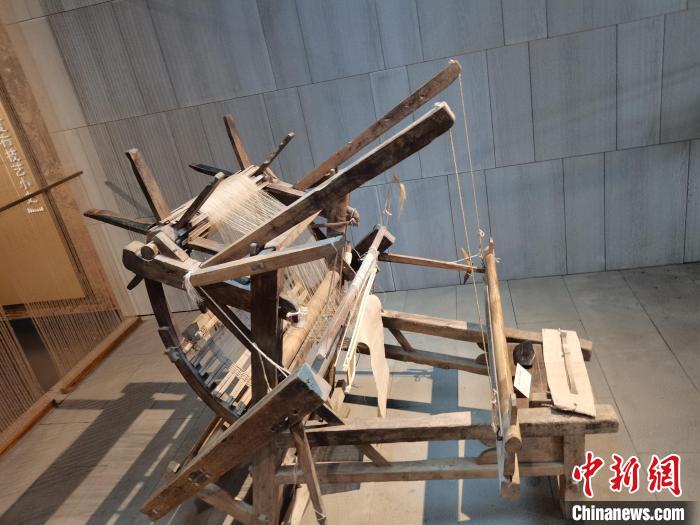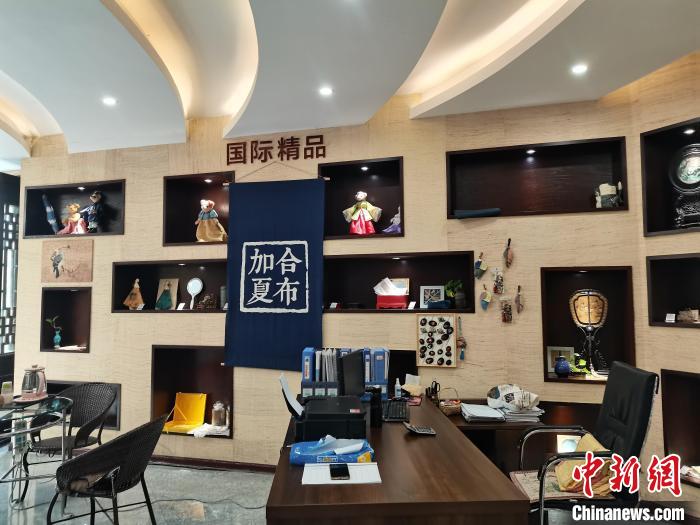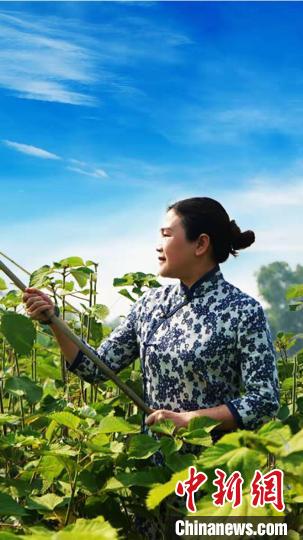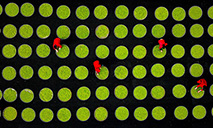Traditional Chinese linen sells well, wins hearts of local consumers in Japan, South Korea
Xiabu (literally meaning a cloth for the summertime), a kind of Chinese linen, is an ideal material for people seeking suitable clothes to wear during the hot summer season. Recently, manufacturers of Xiabu in China have received a soaring number of orders, including many placed by international customers in Japan and South Korea.
Additionally, thanks to the Regional Comprehensive Economic Partnership (RCEP), which took effect at the beginning of this year, Xiabu cloth has garnered wider attention in the two East Asian countries, who are also parties to the mega regional trade deal.

Photo shows a small township famous for Xiabu production in the Rongchang district of Chongqing Municipality, southwest China. (Photo/Zhang Xu)
Xiabu is made from ramie. The craftwork for producing Xiabu has a history of more than 1,000 years in Rongchang district, situated in southwest China’s Chongqing Municipality. In ancient times, Xiabu was a preferred material in China for royals and the nobility to wear during the summer, being both beautiful and comfortable while having antibacterial and mould-proof capabilities.
In 2019, Xiabu was listed as a national-level intangible cultural heritage item in China.

Photo shows a loom inside a Xiabu museum located in the Rongchang district of Chongqing Municipality, southwest China. (Photo/Zhang Xu)
“Xiabu is a texture for traditional clothes worn by people in Japan and South Korea. People in the two countries will wear different types of clothing made from the material on different important occasions,” introduced Huang Xiuying, an inheritor of the ramie-making techniques from Rongchang district.
Huang started to learn ramie-making techniques starting in her childhood, when her father was involved in producing a Xiabu product sold on the international market.
Huang took up studies on foreign trade and culture as a university student at Sichuan International Studies University in Chongqing. After graduating from university, she got engaged in foreign trade in the 1990s.

Photo shows a loom inside a Xiabu museum in Rongchang district, southwest China’s Chongqing Municipality. (Photo/Zhang Xu)

Photo shows clothes, as well as cultural and creative products, made from Xiabu linen. (Photo/Zhang Xu)
Japan and South Korea used to produce Xiabu as well as exporting the raw materials for Xiabu linen to other countries, with textile factories based in Chongqing also active in the industrial chain and engaged in turning the raw materials into final products.
“I had been engaged in the processing of Xiabu raw materials, and I could earn dozens of dollars by producing a roll of Xiabu,” said Huang. She also discovered an alternative material that has a good quality and with a price that is reasonable. The material later became a popular product on the global market.

Photo shows socks made from Xiabu cloth materials. (Photo/Zhang Xu)
Huang said that nowadays Xiabu is also used to make socks, scarves, folding fans, sachets and bags. South Korean companies, including Samsung, have purchased Xiabu in bulk from Huang, and then turned the cloth materials into articles for use at affiliated hospitals.

Photo shows Huang Xiuying. (Photo courtesy of Huang Xiuying)
Huang said more than 100 companies in Rongchang district are currently engaged in Xiabu manufacturing and related businesses. Together they export tens of millions of yuan worth of products annually.
Photos
Related Stories
- Handmade coarse cloth gets new shine
- Chinese university professor invents electricity-generating cloth
- Laundress Zhang Jing's daily life
- Traditional grass linen — a national intangible cultural heritage
- Spinning tales of handwoven cloth
- Traditional cloth decoration for Tibetan Losar
- 6380 cloth shoes placed to mark deceased Chinese labours
Copyright © 2022 People's Daily Online. All Rights Reserved.










